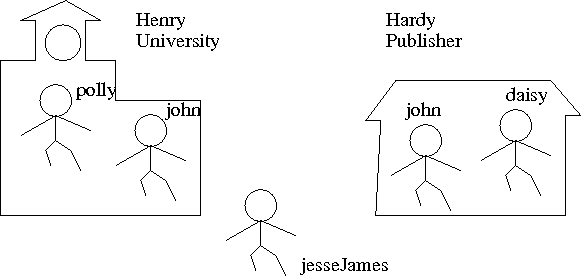sub function_name {
statement;
:
:
}
#!/usr/bin/perl -w
my $a = 2;
my $sum = &Add(10, $a);
print "10 + $a is $sum\n";
exit;
sub Add {
my ($num1, $num2) = @_;
my $result = $num1 + $num2;
return $result;
}
&function_name(argument1, argemuent2, ...);
or
function_name(argument1, argemuent2, ...);
- When a subroutine is invoked, the process jumps to the named
subroutine, and execute the statements in there.
- Then the process will come back to the original place where the
subroutine was invoked.
- The ampersand (
&), indicating the subroutine (c.f.$indicates scalar variable), is optional (I usually don't use it).

- Arguments are the way to communicate with a subroutine.
- If a variable is used as the argument, the value is passed to the subroutine.
- Some subroutines may not need any arguments. Just keep the
argument empty:
func1();
The returned value can be assigned to a variable.
But returning values is optional; some subroutines do not require a returning value.
#!/usr/bin/perl -w
my $seq = "ATGCAA";
my $numA = CntBase($seq, "A");
print "Num of Base A $numA\n";
exit;
sub CntBase {
my $seq = $_[0];
my $base = $_[1];
my @baseArray = split (//, $seq);
my $cntr = 0;
foreach my $b (@baseArray) {
if ($b eq $base) {
$cntr++;
}
}
return $cntr;
}
my $seq = $_[0]; my $base = $_[1];
Another method to receive the arguments:
my $seq = shift; my $base = shift;
The first element of @array gets assigned to $element, and
the 1st element gets removed from @array.
my @a = 10..13; # @a = (10, 11, 12, 13)
my $element = shift(@a); # $element = 10
# @a = (11,12,13)
If no argument is given to shift, it operates on the default array @_. That's why my $seq = shift; works.
sub BaseComposition {
my $seq = shift;
my @baseArray = split (//, $seq);
my %cntResult = (
"A" => 0,
"T" => 0,
"G" => 0,
"C" => 0
);
foreach my $b (@baseArray) {
$cntResult{$b}++;
}
return %cntResult;
}
- Write a function which receives an array of numbers, and return the sum of all numbers.
- Write a function which receives a scalar variable containing a
DNA sequence. Then replace the lower case nucleotides (atgc) with 'N' and
return a scalar variable which contains only ATGCN. Hint:
$seqString = join ('', @baseArr);can be used to convert an array to a character string.
